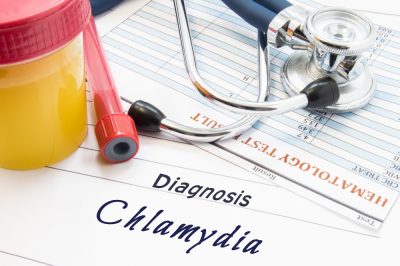Sexually transmitted diseases or STDs are a risk for sexually active and may even affect teens and young adults aged between 15 to 24. The usual symptoms of STD include a burning sensation while urinating, itchiness, and sores on the genitals.
A person can also be infected with STDs without the appearance of a single symptom. It is a highly contagious disease that is only transferred via sexual intercourse. Therefore, it is highly suggested to use condoms and other means of protection against STDs.
Although this protection method does not guarantee that it completely prevents the transmission of STDs, it is better than having no protective measures. It is equally important to undergo tests to check for possible STD transmission regularly.
The Centers for Disease Control and Prevention (CDC) estimated that 20 million new cases of sexually transmitted diseases emerge every year, and half of it affects young adults aged 15 to 24 years old. It is possible to be infected even without the carrier of the disease knowing that they have STD.
The good news about STDs is that treatment is widely available. A long list of problems can occur if one leaves it untreated. It makes an already infected person more susceptible to acquiring another STD, infertility problems, other reproductive issues, and long-term conditions.
Here are the eight most common sexually transmitted diseases men should watch out for.
HPV
 First in line is the human papillomavirus, which is commonly identified as HPV. In the US alone, HPV is among the leading causes of STD and one of the most common. There are over 40 variants of this virus, and genital warts is one symptom often linked to some types of STDs. Genital warts appear on the genital area as tiny pink or flesh bumps. These bumps are itchy that leads to discomfort and even bleeding. If left untreated, the symptoms may escalate to an even worse reproductive disease and possibly leads to cervical cancer. There are also other types of HPV that result in cancer of the genitals, mouth, and throat. It is difficult to determine HPV infection during the early stages since they typically appear without any symptoms. However, a vaccine is available to prevent this type of virus.
First in line is the human papillomavirus, which is commonly identified as HPV. In the US alone, HPV is among the leading causes of STD and one of the most common. There are over 40 variants of this virus, and genital warts is one symptom often linked to some types of STDs. Genital warts appear on the genital area as tiny pink or flesh bumps. These bumps are itchy that leads to discomfort and even bleeding. If left untreated, the symptoms may escalate to an even worse reproductive disease and possibly leads to cervical cancer. There are also other types of HPV that result in cancer of the genitals, mouth, and throat. It is difficult to determine HPV infection during the early stages since they typically appear without any symptoms. However, a vaccine is available to prevent this type of virus.
Herpes
A contagious viral infection caused by the herpes simplex virus (HSV) is called herpes. The two types of herpes simplex virus, HSV-1 and HSV-2, are known to cause genital sores, anal sores, and cold sores. A pregnant woman infected with HSV during her first trimester puts the fetus in a vulnerable position.
Syphilis
Caused by a bacterium called Treponema pallidum, syphilis is another highly contagious bacterial infection that is transferred when chancres or sores come in direct contact. One early warning sign of having syphilis is that a single sore appears on the penis, vagina, anus, and mouth. This sore is painless, round, and firm. Because it is painless, there is a difficulty in noticing chancres, and there are instances that it disappears on its own. However, this will only increase the chances of leaving the infection untreated. Syphilis destroys organs such as the heart, liver, bones, and joints once it evolves to more advanced stages.
Hepatitis
Hepatitis is a sexually transmitted viral infection that targets the liver. There are three hepatitis viruses. Among these viruses, only HAV and HBV have a vaccine.
Hepatitis A Virus (HAV) is transmitted through the feces of HAV-infected people, often via close personal contact such as living close or engaging in intercourse. Contaminated food and water and traveling internationally are also factors for the transmission of HAV.
Hepatitis B Virus (HBV) transmission involves the exchange of bodily fluids, which is possible via sex, sharing of needles, and pregnancy. This type of hepatitis is present in the blood.
Hepatitis C Virus (HCV) is also found in the blood. Exchanging blood and other bodily fluids through sexual and non-sexual means is a high risk for hepatitis C infection. Unfortunately, there is no available vaccine for it.
Viral hepatitis symptoms are characterized by fatigue, nausea, vomiting, stomach pain, dark-colored urine, and yellow skin and eyes. This is an indicator of severe damage to the liver, which can end in death.
Trichomoniasis
Also known by its shortened form “trich,” trichomoniasis is an STD caused by the parasite Trichomonas vaginalis. There are slight differences between the symptoms of men and women. The reported symptoms in women include persistent itching, redness, and soreness of the genitals accompanied by painful urination, which can have a discharge and a strange odor. As for men, irritation inside and around the genital, burning sensation during urination and/or ejaculation, and an unusual discharge are some of the symptoms.
Gonorrhea
Another bacterial STD caused by the bacterium Neisseria gonorrhea is called gonorrhea. Strangely, this bacteria thrives on body parts that are warm and moist—vagina, anus, urethra, throat, and even in the eyes. Just like with the previously mentioned STDs, the symptoms of gonorrhea also include painful urination and discharge coming from the genitalia. Problems can further accelerate to severe and fatal complications if gonorrhea is left untreated. As for untreated women, this may affect the pelvis which brings permanent damage to the female reproductive system resulting in infertility.
Chlamydia
 Chlamydia is another bacterial STD caused by Chlamydia trachomatis. People infected with chlamydia may or may not notice any symptoms at all. The usual symptoms are abnormal discharge from the genitals and a painful burning sensation associated with urination. Similar to gonorrhea, women with chlamydia may develop a pelvic inflammatory disease (PID) when left untreated.
Chlamydia is another bacterial STD caused by Chlamydia trachomatis. People infected with chlamydia may or may not notice any symptoms at all. The usual symptoms are abnormal discharge from the genitals and a painful burning sensation associated with urination. Similar to gonorrhea, women with chlamydia may develop a pelvic inflammatory disease (PID) when left untreated.
HIV
As the name suggests, Human Immunodeficiency Virus (HIV) is a viral STD that attacks the immune system. Indicators of a compromised immune system due to HIV differ according to the progression of the condition. The initial stages include flu-like symptoms. The sudden disappearance of symptoms typically occurs during the middle stages. And lastly, losing weight, persistent sweating at night, and unusual skin rashes usually occur in the advanced stage.
HIV is often a precursor to an even worse condition called acquired immune deficiency syndrome or AIDS when it is left untreated. An infected person transfers HIV to a possible uninfected person via sexual intercourse, especially if one does not have any means of protection. HIV is not only passed through sexual means but also with non-sexual methods that involve blood exchange. These include sharing needles and passing the virus from the infected mother to the child during pregnancy, birth, or breastfeeding.








COMMENTS